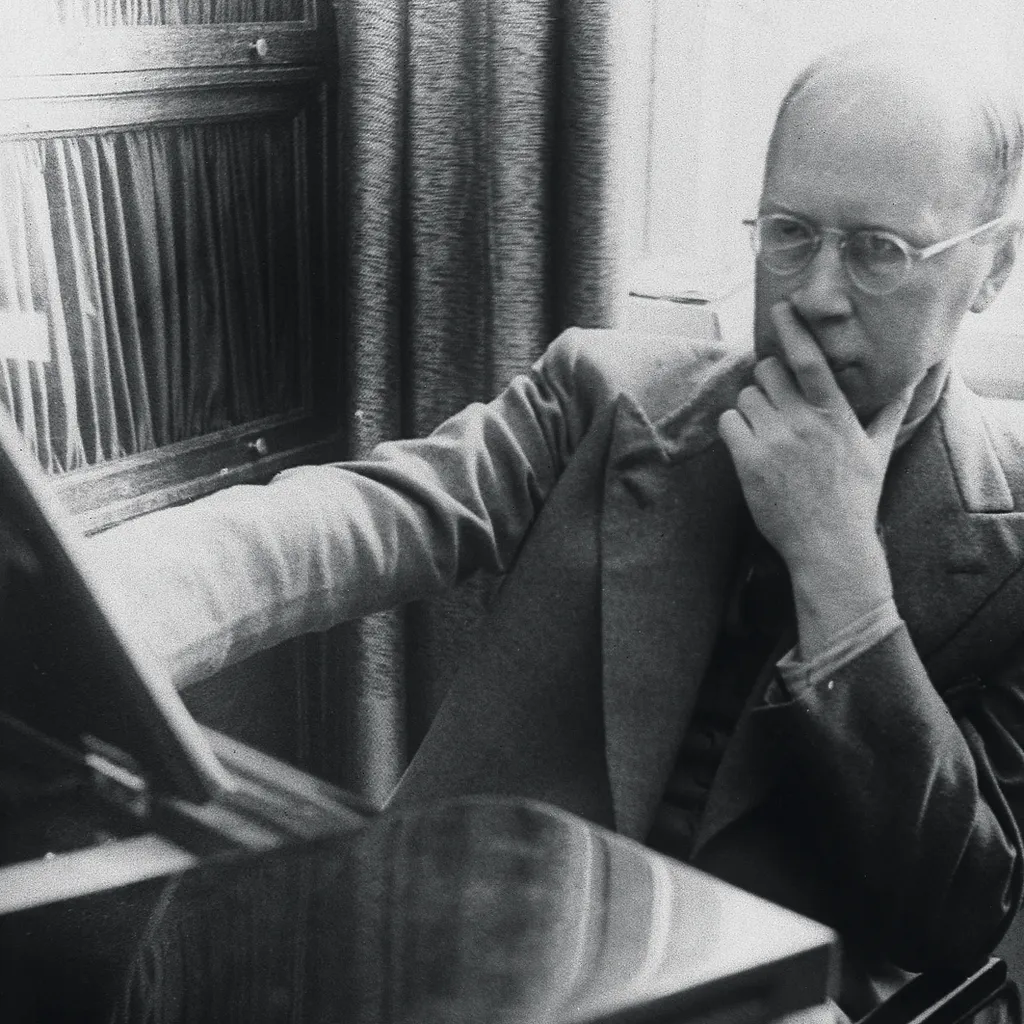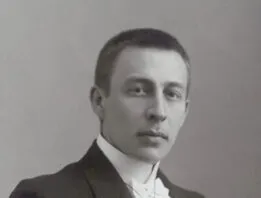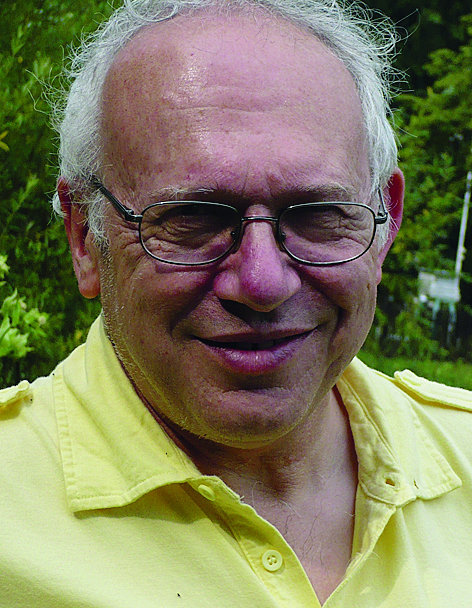Reinhold Glière was one of those composers whose allegiance to tradition either courted controversy or, more often than not, neglect.
Regarded as a great musical icon in his native Ukraine, his reputation elsewhere remains mixed. Detractors accuse him of being an epigone, writing music in the style of Tchaikovsky well into the 20th century. The late American scholar Richard Taruskin went even further, describing him as ‘a doddering relic’.
Others have targeted Glière for accepting government-sponsored invitations to visit Azerbaijan in the 1920s and Uzbekistan the following decade with the requirement to compose a national opera for each country. The resultant works, fusing elements of indigenous Azerbaijani and Uzbek folk music with Glière’s own highly polished style, have been heavily criticised as synthetic, merely representing an unfortunate manifestation of Soviet musical imperialism.
Who was Reinhold Glière?
Such disparagements ignore some incontestable aspects of Glière’s achievement. Undoubtedly, he was a convincing melodist and a superb technician, writing extremely attractive music. Furthermore, he was one of the great survivors of the first half of the 20th century.
Despite living through a period of almost unparalleled political turmoil, Glière somehow managed to carve out a consistently successful career, both in Tsarist Russian and the Soviet Union. In the later part of his life, he was hailed as an ideal exponent of Socialist Realism, composing works that not only had an instantaneous appeal but, to the delight of the Soviet bureaucrats, also avoided any unwarranted contamination with Western modernism.
Glière remained a staunch conservative, reaffirming at every juncture the sound principles of craftsmanship that he had absorbed as a result of a comprehensive musical training in Moscow. Immensely versatile, his prolific output contains significant contributions to a wide range of genres.
An equally lasting legacy was his inspirational talent as an administrator and pedagogue. Early in the 20th century, he had acted as a private tutor to the precociously gifted Sergey Prokofiev and his older colleague Nikolai Myaskovsky.

Then in the following decade, which he spent in Kyiv, Glière played the major role in motivating and stimulating the compositional developments of the Ukrainians Boris Lyatoshinsky and Lev Revutsky. Moving to Moscow in 1920, he taught several generations of Soviet composers, including such prominent names as Alexander Mosolov, Aram Khachaturian and Lev Knipper.
When was Reinhold Glière born?
Glière was born in 1875 in Kyiv into a family of mixed German and Polish heritage. His father pursued a career as a wind instrument maker in Ukraine, having emigrated there from Klingenthal in Saxony. Indeed, Glière makes our list of best Ukrainian composers.
At the age of 16, Glière entered the Kyiv School of Music, studying the violin with the great pedagogue Otakar Ševčik. His precocious talents were quickly recognised, so much so that in 1894 he gained entry to the Moscow Conservatoire, where he became a pupil of a host of musical luminaries including Taneyev, Ippolitov-Ivanov and Arensky.
Graduating in 1900 with a gold medal in composition, the first of a multitude of prizes that were awarded to him, he rapidly established himself, alongside his immediate contemporaries Scriabin and Rachmaninov, as one of the foremost young composers based in Moscow.

His talents were soon recognised throughout Europe. A substantial number of his early chamber music compositions, including two string quartets, three string sextets and a string octet, secured performances and favourable reviews in London, Vienna and Paris. In the summer of 1906, Sir Henry Wood introduced Glière’s First Symphony to the Proms.
The performance prompted a particularly effusive response in The Musical Standard, the anonymous critic praising the composer for writing ‘extremely listenable music which never bores you for a single moment’.
Musical developments
Meanwhile, Glière felt the need to broaden his musical horizons by moving to Berlin, where from 1905-08 he studied conducting with the Mahler disciple Oskar Fried. He now began to absorb a diverse range of musical influences from Wagner and Richard Strauss to Debussy, expanding the expressive content of his music.
Amongst the most significant compositions of this period is the Second Symphony, more ambitiously conceived than its predecessor, which received its first performance in the German capital in 1908 from the Berlin Philharmonic under the baton of the young Serge Koussevitzky.
Reinhold Glière's most famous pieces
On his return to Moscow that same year, Glière entered the most feverishly creative period of his life. From 1908-12, he composed no fewer than 30 works in different genres. Admittedly, many of these were beautifully crafted short pieces, including duos for various combinations of instruments, as well as several collections of piano music and songs.
Surrounding these, however, were two far more ambitiously conceived works: the elaborately scored symphonic poem The Sirens and his magnum opus, the Third Symphony Ilya Muromets, for which he was awarded the Glinka Prize.
When did Glière compose Ilya Muromets?
Tracing the life of the eponymous Kyiv bogatyr (warrior), Ilya Muromets was first performed in Moscow in 1912. Scored for an extravagantly sized orchestra and utilising a diverse and imaginative number of leitmotifs to give the work symphonic coherence, it is the last and most extended of three epic late-Romantic symphonies composed in Russia prior to the First World War, Scriabin’s Divine Poem and Rachmaninov’s Second Symphony being the others.
In contrast to these works, however, Ilya Muromets is an entirely programmatic work, following in the footsteps of Rimsky-Korsakov’s Antar or Tchaikovsky’s Manfred. Its four titled movements, tracing a sequence of fantastical episodes in Ilya’s life in graphic musical detail, draws upon a wide range of influences from Tchaikovsky and Rimsky-Korsakov to Wagner, Richard Strauss and Scriabin.
Glière deploys an extraordinary array of orchestral colours in order to create a vivid musical experience which in the depiction of the frightening whistling sounds of the evil Nightingale robber of the second movement even comes close to the magical soundworlds conjured up in Stravinsky’s Firebird.
The dazzling, almost cinematic, orchestration and extravagant scale of Ilya Muromets seemed tailor-made for the virtuoso orchestras that flourished in the US during the first half of the 20th century. Star conductors Leopold Stokowski and Eugene Ormandy regularly programmed the work in their concerts, though both interpreters saw fit to wield the proverbial knife, cutting the overall duration of the Symphony of 90 minutes almost by half. It’s a practice that mercifully hasn’t continued in most of the recent recordings of the work.
Reinhold Glière's later works
After the enormous efforts that went into writing Ilya Muromets, Glière seems to have experienced something of a crisis. Although he was fully intending to begin work on a Fourth Symphony and started to sketch another ambitiously conceived symphonic poem, his return in 1912 to Kyiv, where he eventually became director of the Music Conservatoire, left him barely any time for composition.
Glière’s creative juices hardly revived after moving to Moscow in 1920. Eventually, however, he was able to relaunch his compositional career by focusing his attention on genres that he had not considered previously. The already mentioned, if somewhat problematic, national operas he composed for Azerbaijan and Uzbekistan are a case in point.
But more significantly, Glière turned to writing ballets. He had already tried his hand early in the 1920s with two works, Cleopatra and Egyptian Nights, that had limited exposure. But in 1927, he really hit the jackpot with The Red Poppy, first performed at the Bolshoi.
The popularity of this particular work, which survived on the Moscow stage for a good number of years, undoubtedly rests on its claim to be the first genuinely Soviet ballet with a politically apposite scenario set in 1920s China – amongst other things, it depicts a Soviet sea captain rescuing coolies from brutal exploitation by the local Chinese harbourmaster.
Yet Glière’s score is hardly revolutionary. Apart from the obligatory nod to exploiting pentatonic scales whenever any Chinese person is dancing on stage, the music evokes a bewildering mixture of influences from Délibes and Offenbach to Scriabin. Nonetheless, the Suite Glière drew from the complete work contains his greatest hit, the Russian Sailors’ Dance, a brilliantly realised sequence of variations on the famous Russian song ‘Little Apple’ which in a high-voltage performance is guaranteed to bring the house down.
Glière continued to write ballets up to the end of his life. He secured strong official approval in particular for The Bronze Horseman, based on Pushkin’s famous poem and first staged in 1948. Once again, a Suite utilising extended numbers from the complete work gained a certain degree of popularity and was regarded in official circles as an exemplary example of musical socialist realism.
Another notable change of focus in Glière’s creative development was his turn to writing concertos, a genre he had completely overlooked until the 1930s. The composer cleverly sought to enrich the repertoire with concertos for relatively neglected instruments such as the harp in 1938 and horn in 1951, the latter completed five years before his death.
Most remarkable of all was a Concerto for wordless Coloratura Soprano and Orchestra, composed during the darkest days of the Second World War. Although Glière utilises a musical language that would have sounded old-fashioned even 40 years earlier, it’s a wonderfully nostalgic work that was surely intended to provide audiences with necessary relief from the external traumas they were experiencing at the time. In this respect, Rachmaninov’s comment that Glière invariably composed music of ‘spun gold’ seems particularly apt.
Premiered in 1943 by soprano Nadezhda Kazantseva, the Concerto for Coloratura Soprano and Orchestra later won Glière the first of three Stalin Prizes.
Who were Reinhold Glière’s influences?
Glière revered the music of his great forebears Tchaikovsky and Rimsky-Korsakov, and sought to maintain the strong traditions of Romantic music upheld by both composers well into the 20th century. In many ways, his stylistic orientation paralleled that of his older colleague, Glazunov.
Glière was a virtuoso orchestrator with a wonderful ear for sonority. There are few more dazzlingly colourful scores written prior to the First World War than his epic Third Symphony Ilya Muromets.
Glière’s early commitment to writing chamber music, with no fewer than six substantial works composed for various sized string ensembles, marks him out as one of the most significant contributors to the genre after Tchaikovsky and his teacher, Taneyev. The later Third and Fourth String Quartets, composed during the Soviet period, remain grievously neglected. But both works demonstrate that despite the passing of time, he had not lost his comprehensive mastery of this medium.
Glière’s consciously old-fashioned and widely accessible musical style enabled him to maintain a relatively stable career in the Soviet Union. Above all, it was these qualities that endeared him to Soviet cultural bureaucrats who regarded Glière as an ideal exponent of Socialist Realism.
When did Reinhold Glière die?
After a long period of declining health and decreasing activity, Reinhold Glière died in Moscow on 23 June at the age of 81. He was buried in the Soviet capital’s Novodevichye Cemetery.

